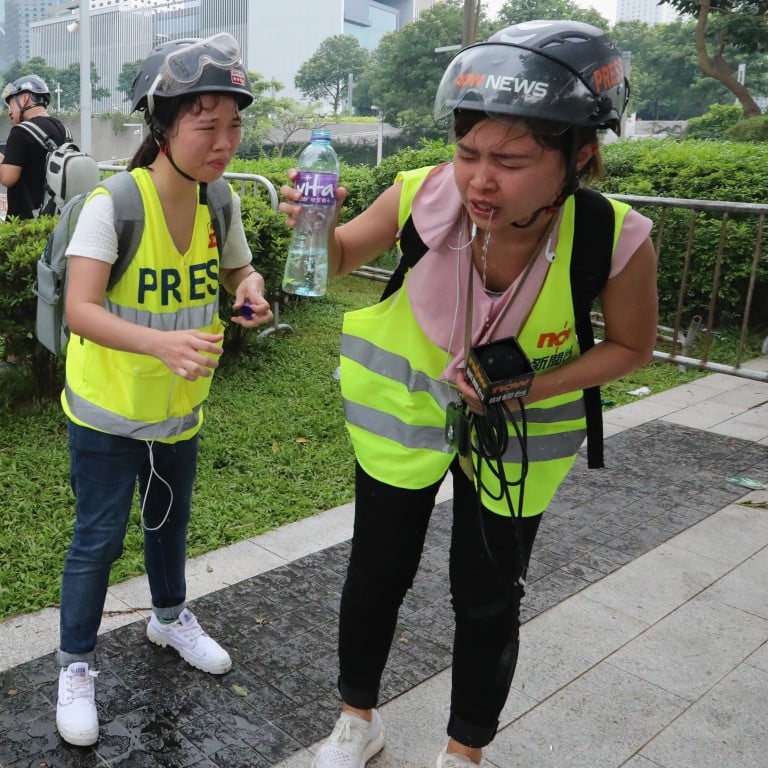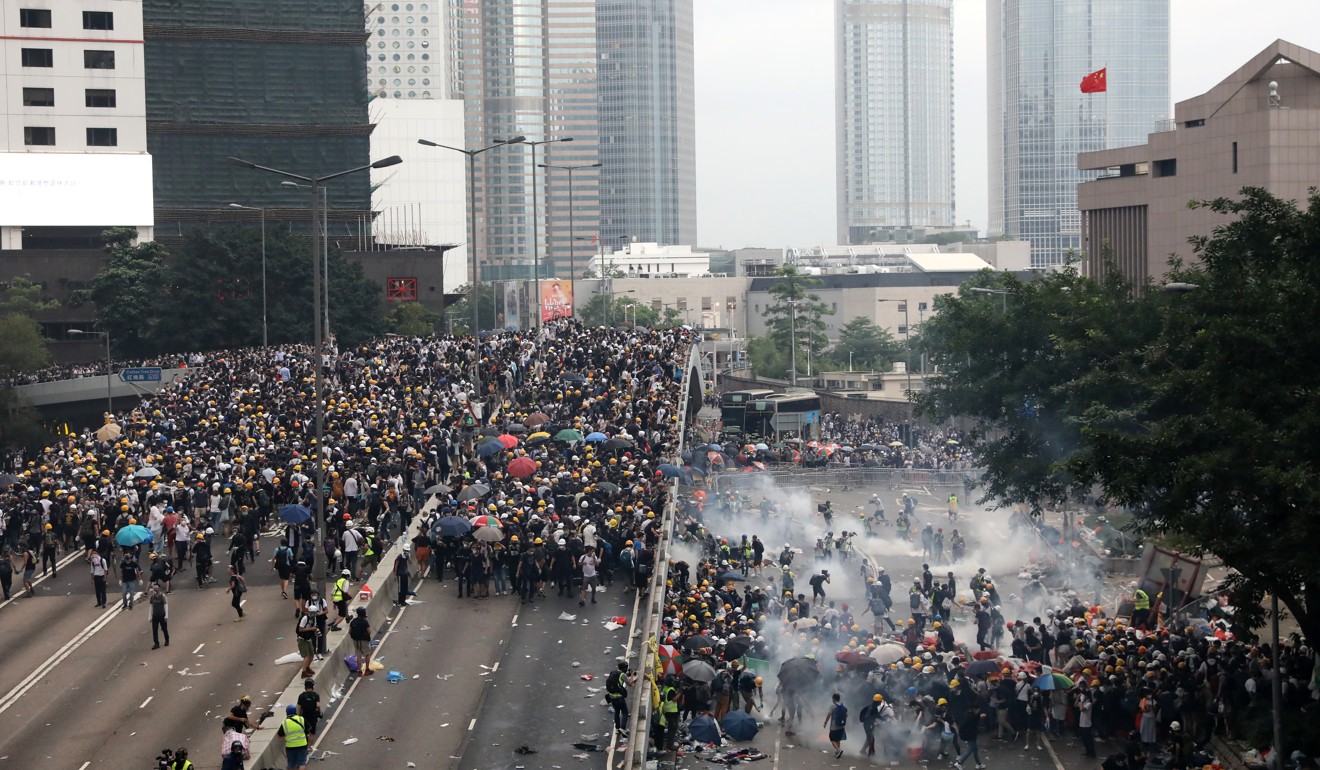
Hong Kong Journalists Association files complaint to independent watchdog, accusing police of using ‘violence and intimidation’ against media at extradition bill protests
- Reporters were victims of tear-gassing, baton attacks and attempts by officers to stop them from covering the protests, association claims
- Association asks Carrie Lam whether force’s approach was sanctioned by senior government officials
The Hong Kong Journalists Association has filed a complaint to a police watchdog over 27 cases of alleged violence or harassment against reporters and other media personnel covering last week’s extradition bill protests.
Journalists fell victim to police deployment of tear gas, baton beatings and other forms of violence, as well as unjustified searches and obstruction, according to allegations lodged with the Independent Police Complaints Council on Monday.
The group has also written a letter to Chief Executive Carrie Lam Cheng Yuet-ngor, urging the government to set up an independent investigation committee to look at whether police were under official orders to respond in the way they did.
“The association has sufficient reason to believe that [the police officers involved] used unnecessary violence and intimidation against some people who were evidently journalists, that far exceeded the legal enforcement rights the police can use to keep public order,” the HKJA said.
In the complaint, the association listed 10 cases of police firing lachrymators, commonly known as tear gas, at reporters from short range, including three cases where reporters were hit directly in the head with the substance.
There are also three incidents of officers harming journalists or damaging their equipment with batons, and one case of a reporter injured by suspected rubber bullets or beanbag rounds.
Eight cases in the complaint involved police pushing or chasing reporters with shields and batons away from the scene so they could not observe the force’s clearances of protesters, injuring at least one reporter.
Two cases involved officers using a strong flashlight to prevent reporters from taking photos, and three cases involved the police searching journalists without justification.

The association said most of the reporters involved were willing to submit their names and photo and video evidence to the council. A few who did not, out of safety concerns or employer restrictions, provided those materials to the association.
The HKJA said that in all cases the victims bore signs that clearly showed that they were journalists, including reflective vests or helmets with “Press” written on them, or by wearing media badges.
They also clearly identified themselves to the police, and were not among protesters.
“The possibility that they were affected in the confusion of chaos is very low,” the association said.
Police ‘threatened and humiliated’ in backlash to force’s response to protests
But the group said it understood the investigation would be difficult, because many of the officers involved wore equipment that covered their faces, and did not display identification numbers on their clothes.
The association said the council should not only investigate the cases, but also put forward recommendations on how the police should identify themselves in such situations.

Hundreds of thousands of people took to the streets over two consecutive Sundays this month to oppose the extradition bill.
Sunday’s protest followed Lam’s decision on Saturday to only put the planned amendments to the Fugitive Offenders Ordinance on hold.
Protesters demanded she retract the plan altogether and denounced what they called the police’s heavy-handed approach to last week’s protests.
Did police use excessive force to deal with Hong Kong protests?
The widely criticised bill would allow fugitives to be sent from Hong Kong to jurisdictions which do not already have extradition agreements with the city, including mainland China.
Opponents fear the bill, once passed, would lead to unfair prosecutions.
Amid the protests and police crackdown, videos of journalists being targeted were widely circulated online.
In one video, a journalist was heard telling a police officer: “I am a reporter.” The officer replied, “Report your mother”, a variation of a popular Cantonese profanity.
Police adopt ‘softly-softly’ approach in bid to cool tensions with protesters
Among those injured in the crowds was a contract driver of public broadcaster RTHK, whose heart stopped once after he was hit by a round of tear gas.
During a news conference with Police Chief Stephen Lo Wai-chung on Thursday, many reporters wore reflective vests and helmets in a silent protest against police actions.

